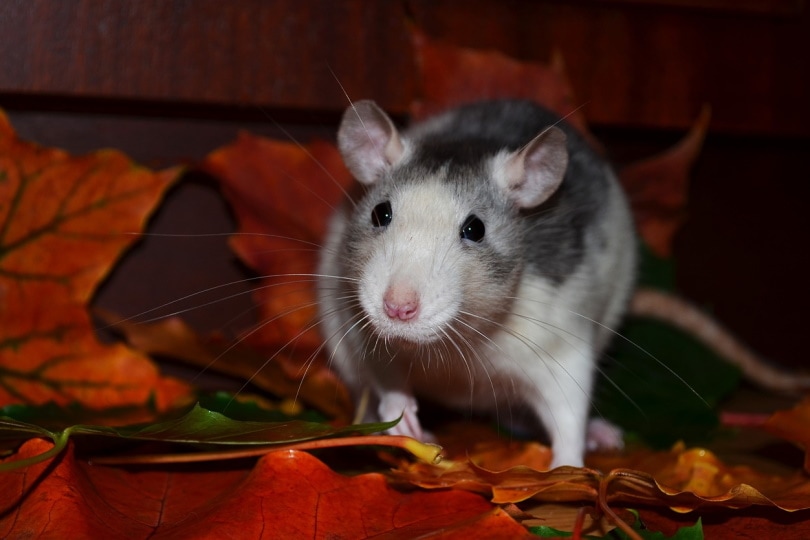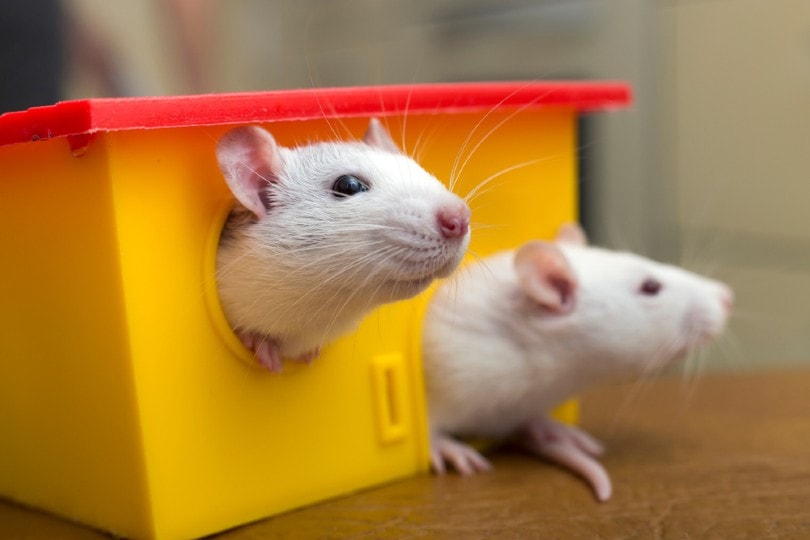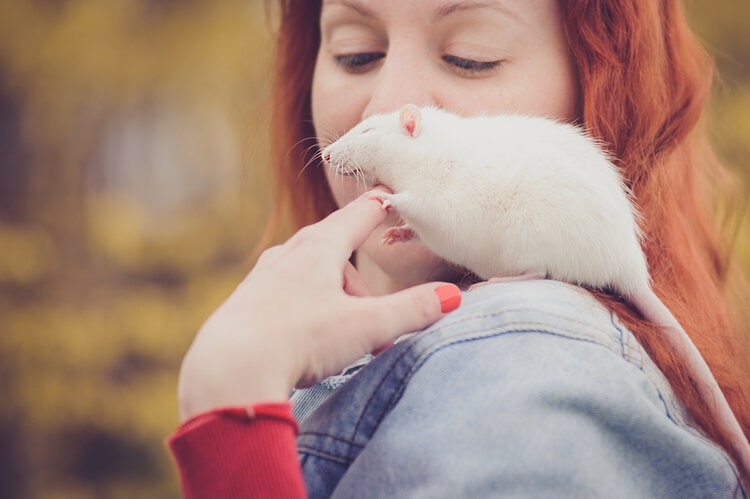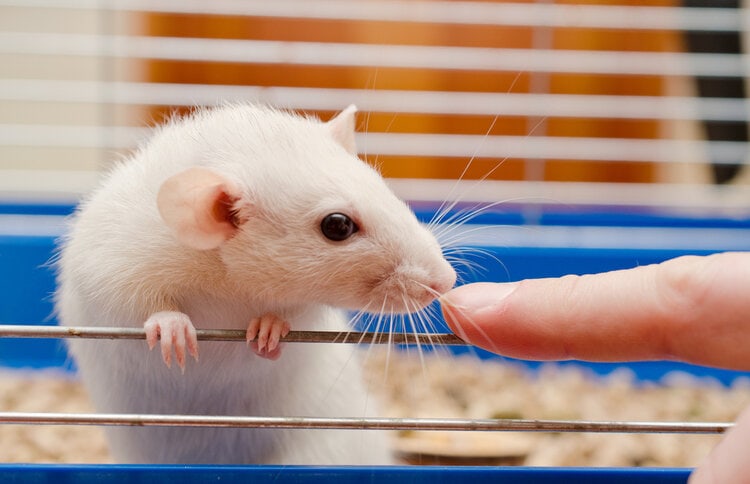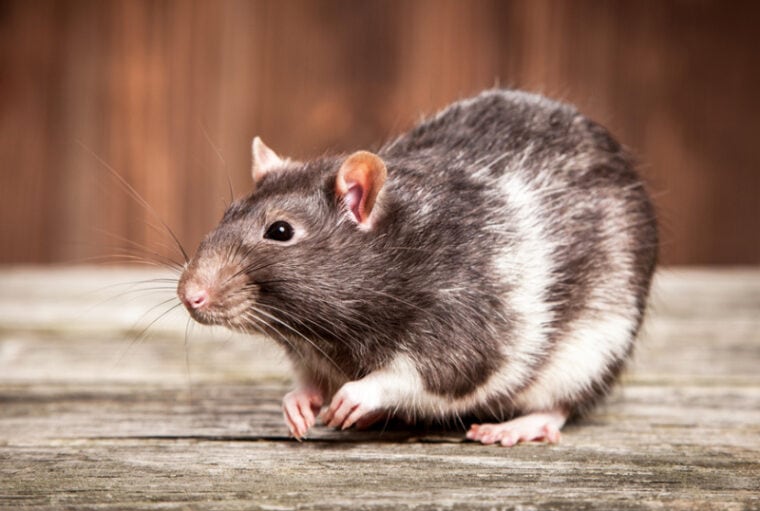
Click to Skip Ahead
Rats can make excellent pets. They are loving, can be trained to learn some basic commands, and they come in a great variety of colors, sizes, and features. Despite their differences, all domestic rats come from the brown rat, or Rattus norvegicus, and have a blunt nose, small eyes and ears, and a tail that is equally as long as their body, although some variants do feature a genetic variance such as hairless or even earless rats.
The American Fancy Rat & Mouse Association only recognize seven different variants of rat, and these are considered the standards for the species.
The 7 Standard Breeds of Pet Rats
1. Standard Rat

The Standard breed is as close to a wild brown rat as possible. It has ears on top of its head and of normal size. Its tail is roughly equal to the length of its body, and they eat what would be considered a standard rat diet with no unusual or exceptional requirements. With regular handling and careful ownership, they can become loving and caring pets.
- Also Read: What Do Rats Eat in the Wild & as Pets?
2. Rex Rat

Rex variants exist in many species and types of animals. Rex rats, like other Rex animals, have crinkly or curly fur. Their whiskers and eyelashes also tend to curl and they have an almost wooly feel to them, hence the nickname of sheep-rats. As the Rex ages, their fur does tend to thin which can lead to bald spots. You may also hear references to Double Rex Rats, which have two of the rex genes and have very tightly curled fur. They may experience issues with their eyebrows and whiskers.
3. Manx Rat

The Manx rat is often referred to as the tailless rat because its lack of a tail is its most striking feature. Some do have a tail stub, but they do not have a full tail. This type of pet rat can require additional care because the tail is important to the rat’s balance and self-care. Tailless variants are not always recognized by kennel clubs and associations.
4. Sphynx Rat

The Sphynx is another rat breed that earns its regular nickname from its most common feature. In this case, the hairless rat is selectively bred to be completely hair-free. Hairless rats can get ill easily, and you will need to provide them with additional warmth. For this reason, the Sphynx rat is not recommended as a pet, because it encourages the continued breeding of this type of rat.
5. Satin Rat

The Satin rat, or Satin Coat rat, is appropriately named for its long, shiny coat. When young, it can be difficult to tell the Satin apart from other breeds, and the best way to tell this rat apart is by using their whiskers. The Satin Coat rat has whiskers that are straight, except for the tip, which is curled.
6. Dumbo Rat

While the standard rat has ears on top of its head, the Dumbo rat has ears that are lower down the side of its head and are much larger. The whole head has the appearance of being larger. While owners swear that the breed lives longer and is friendlier, neither of these factors is scientifically proven. They have the same average lifespan as a standard rat breed, and friendliness is determined by the level of interaction a rat receives from its humans.
7. Bristle Coat Rat
The bristle-coated rat has a coarse coat that has the texture and feel of a wire brush. When young, the coat may appear curled like the Rex, but it will straighten out as the rat ages. The Bristle Coat can come in any color or marking, and will have straight whiskers that are curled at the end, similar to the whiskers of a Satin Coat rat.
 The 9 Other Pet Rat Variants
The 9 Other Pet Rat Variants
As well as these standard breeds, several other variants exist. They may not be widely recognized by kennel clubs, but breeders know of their existence, and some owners may have an interest in these breeds. Many of them are named after their color but are distinct enough to be considered a separate breed.
1. Topaz
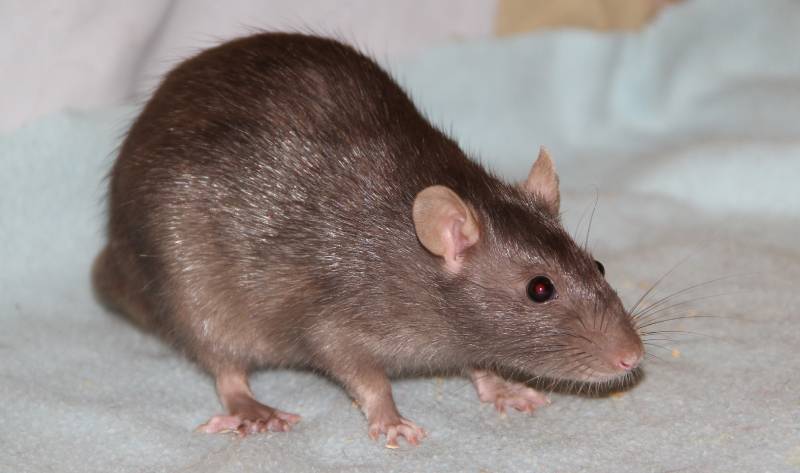
The Topaz rat, closely related to the Fawn rat in the USA, is popular because of its rich gold color. It also has very dark eyes that are nearly black, and the breed standard demands that the belly fur be a silver color.
2. Lilac Agouti

Agouti means fur that is banded light and dark with a grizzled effect, and many different agouti fur colors might be prominent in a pet rat. The lilac Agouti is a combination of blue and lilac banding. It is expected to have a silver belly and grey feet. Eyes should be dark ruby or black.
3. Cinnamon Pearl

The Cinnamon Pearl rat has three bands of color. The base of the coat is cream, the middle blue-orange, and the guard hair is silver. Overall, the Cinnamon Pearl has a definite silver sheen.
4. Silver Fawn
The Silver Fawn gets the silver in its name from the guard hairs, which are a silver color. The Silver Fawn, however, has much more of the fawn look. In the US, a lighter amber color is preferred, but this may be a darker fawn color. Eyes are expected to be a pink color, rather than dark, and the breed is considered attractive.
5. Powder Blue

In contrast to the British Blue, which is at the darkest end of the blue spectrum for rats, powder blue is a very light hue. The color is described as being a pale blue dove color. Eyes are black or ruby.
6. Quicksilver

The Quicksilver is a platinum color. It has the appearance of a bright blue-grey and should not have any suggestion of lightening or another color. The eyes should be a mild ruby and the feet are grey.
7. Russian Pearl
This breed is a combination of Russian Blue, Pearl, and Mink. It has a silver color with cream undertones. Its hair is tipped grey, its feet are grey, and its eyes are black.
8. British Blue

The blue gene can range from a powdery blue to an almost slate-like dark grey, and the British Blue is considered to be the darkest of this scale. Although early examples of blue rats were prone to illness, recent British Blues are hardy animals with similar health characteristics and traits to Standard rats. The British Blue should be steel blue with no discoloration and has white toes.
9. Burmese

The Burmese is another breed of rat that shares its gene name with that of a cat. The Burmese breed is a toffee-colored rat with seal points, and this species has black eyes.
Conclusion
When handled regularly and with affection, rats can make excellent house pets. Some will respond to their name and learn some very basic commands, and there is such a wide variety of colors and patterns that there is almost certainly a breed out there to match your preferences. Above, we have listed 16 of the most popular breeds, including the 7 breed standards that are kennel club recognized. But others, including cross variants and mixed genus, do exist.
You may also want to read:
- Where to Buy a Pet Rat? (Plus an Overview of the Best Places)
- How to Litter Train Your Rat (5 Simple Steps)
Featured Image Credit: George Dolgikh, Shutterstock



